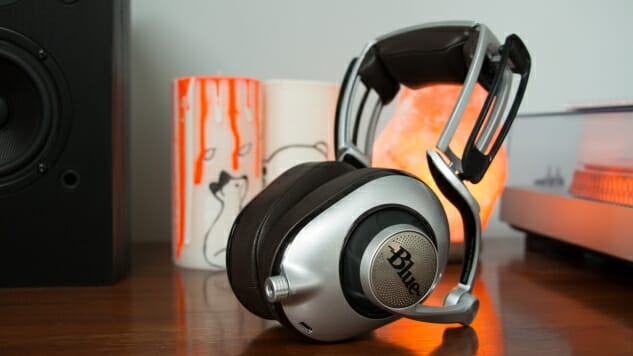
Blue is best known for its excellent, affordable array of microphones. The most popular are the Yeti and Snowball, which are recommended by everyone from musicians, to podcasters, to YouTubers. The company’s approach with its lineup of microphones has always been simple: Make the best possible product and sell it at the best possible price for consumer. That’s why they are so well regarded; they’re simple to use, offer great results and won’t break the bank. The most expensive option, the Yeti Pro, retails for $250 which, when compared to the vast range of mics on the market, is still a good deal.
The company’s other hardware endeavor has far less exposure, and a different approach. Blue’s headphones aren’t about wooing the budget-conscious crowd, but instead impressing the stingy audiophile demographic; people who know their audio and are willing to invest large amounts of money to find the best equipment, and best sound, possible. It does offer two, the Lola and Sadie, that are more in the affordable range at $250 and $400 each, but the crown jewel are the Ella. Nothing like these cans, with their metal and leather finish, planar magnetic drivers and built-in headphone amplifier, exist in the company’s line of microphones. This is the most premium, and highest-ticket, item Blue makes.
At $700, these headphones are actually far cheaper than some of the more intense, high-fidelity, audiophile cans you’ll find in the world. But that doesn’t mean they don’t have to still prove themselves. No matter who you are, $700 is a lot of money to spend, particularly when you can find other lauded planar magnetic cans like the Audeze Sine and HiFiMan HE400S for several hundred dollars less, which means the product had better deliver, and last you a long time.
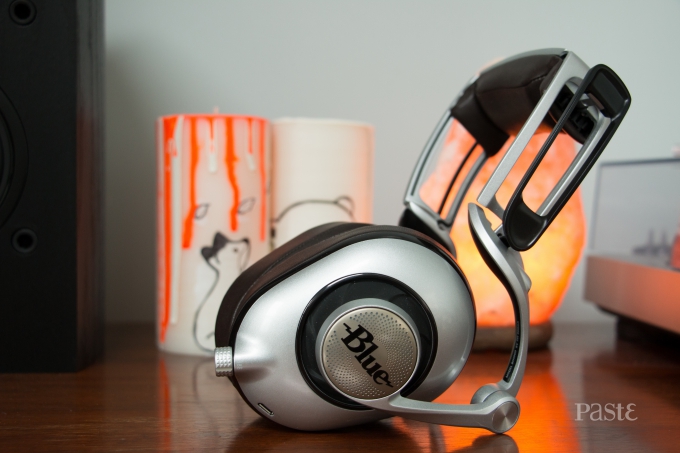 The first bit of good news is that, from a hardware perspective, the Ellas are absolute tanks and thus should physically last you a good, long while. As I mentioned above, the construction here is premium all the way around, with a generous metal frame and plush leather earcups. Comfort is good thanks to the dense padding on the cups, but weight is a consideration. I prefer a lighter headphone, which is why I’m not one to knock plastic builds, but given the planar magnetic drivers, these were always going to be big and bulky. At 481 grams, they are a bit too heavy for my liking, which can make wearing them for extended time troublesome.
The first bit of good news is that, from a hardware perspective, the Ellas are absolute tanks and thus should physically last you a good, long while. As I mentioned above, the construction here is premium all the way around, with a generous metal frame and plush leather earcups. Comfort is good thanks to the dense padding on the cups, but weight is a consideration. I prefer a lighter headphone, which is why I’m not one to knock plastic builds, but given the planar magnetic drivers, these were always going to be big and bulky. At 481 grams, they are a bit too heavy for my liking, which can make wearing them for extended time troublesome.
Aside from the weight, I found no reason to complain about build quality or comfort. They have an interesting, multi-jointed design that allows you to move the earcups up and down on a hinge, as opposed to the more traditional sliding headband method. This means they should fit a wider variety of head shapes, and the cups are big enough to accommodate most ear types, as well. Those earcups also do a valiant job of creating a seal, distancing you from ambient noise. There is no noise cancelling at work, so you won’t be enveloped in a cocoon of silence like with Bose’s QC35s or Sony’s MDR-1000Xs, but the ample cups combined with the significant power do a good job of pushing the sound you want to the forefront and casting aside the noise you don’t.
 While comfort and fit is more important in my eyes when it comes to headphones than looks, the largeness of the Ellas and the multi-jointed design gives them an unbecoming, industrial look that I don’t jibe with. I feel silly wearing them, but am willing to do so because of the quality they offer, but that didn’t stop my significant other from poking fun at me the first time she saw them on my head. The design may appeal more to you, and if so, great, but if you’re like me and find these to be, while not quite ugly, not the prettiest pair you’ve ever seen, don’t let that cloud your judgement. There is a lot offered here to make up for what is lacking in the looks department.
While comfort and fit is more important in my eyes when it comes to headphones than looks, the largeness of the Ellas and the multi-jointed design gives them an unbecoming, industrial look that I don’t jibe with. I feel silly wearing them, but am willing to do so because of the quality they offer, but that didn’t stop my significant other from poking fun at me the first time she saw them on my head. The design may appeal more to you, and if so, great, but if you’re like me and find these to be, while not quite ugly, not the prettiest pair you’ve ever seen, don’t let that cloud your judgement. There is a lot offered here to make up for what is lacking in the looks department.
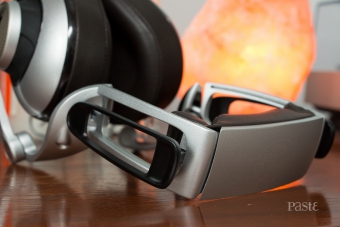 Along with the stellar build, the total package includes a soft carry case, which has an inner lining so wonderfully velvety that I’d like Blue to make a special edition blanket out of it, a 1.2-meter audio cable with in-line controls and microphone, a 3-meter audio cable, a 3.5mm to ¼” adapter and a USB-A to microUSB cable for charging the built-in amp. All the cables are braided, and proved to be quite durable during my two months of testing, and should hold up over time well.
Along with the stellar build, the total package includes a soft carry case, which has an inner lining so wonderfully velvety that I’d like Blue to make a special edition blanket out of it, a 1.2-meter audio cable with in-line controls and microphone, a 3-meter audio cable, a 3.5mm to ¼” adapter and a USB-A to microUSB cable for charging the built-in amp. All the cables are braided, and proved to be quite durable during my two months of testing, and should hold up over time well.
As with every piece of audio equipment, the crux of the issue is placed on how it sounds. Poor hardware would be a disappointment, but if the sound was impeccable it would be more easily overlooked than if those roles were reversed. Here, there is no cause for concern. As good as the hardware is, the sound is better. These are up there with the best headphones, or speakers for that matter, I’ve ever heard.
The planar magnetic drivers, which involve some serious technology that I won’t get into here (if you want a good, and digestible, breakdown of it, check out Dave Ruddock’s review on Android Police), resulting in a more detailed and clear sound. That is apparent the minute you put the Ellas on. Though they excel with higher quality audio files, uncompressed formats like FLAC, Blue’s top-of-the-line cans do a commendable job pulling out detail in compressed formats, like those you’ll find on most streaming services, as well. This is without a doubt the headphones’ greatest strength in terms of the sound. The amount of separation they create is phenomenal, and they do so while keeping everything in balance.
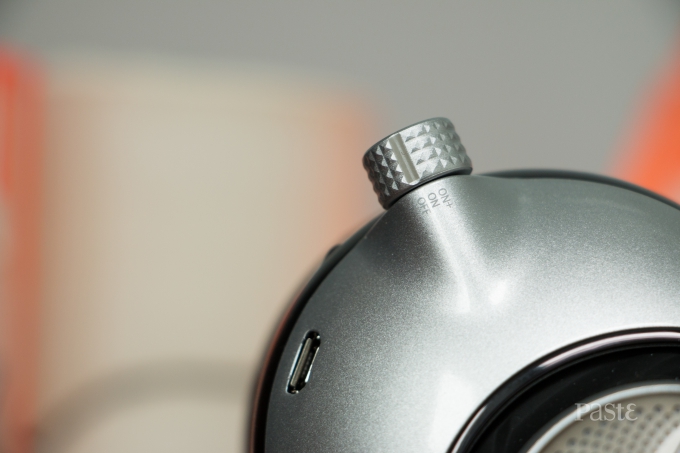 The result is a full, well-rounded sound that is layered, rich and warm but not presented as a jumble that amounts to a mess. Instead, it’s distinct and clear. You can close your eyes and focus on specific elements, a backing guitar line, a vocal run layered over the lead singer, and find it. The best audio equipment takes all the elements of a song, gives them their own space to breathe, but also doesn’t lose sight of the fact that they are meant to exist, and work, together. That may sound like an abstract description, and it sort of is. It’s hard to explain what exactly the Ellas do with a piece of music until you’ve experienced it yourself. The bottom line is the detail is excellent, but thanks to the generous amount of low-end, the sound never becomes cold or distant. It’s encompassing, present and clear.
The result is a full, well-rounded sound that is layered, rich and warm but not presented as a jumble that amounts to a mess. Instead, it’s distinct and clear. You can close your eyes and focus on specific elements, a backing guitar line, a vocal run layered over the lead singer, and find it. The best audio equipment takes all the elements of a song, gives them their own space to breathe, but also doesn’t lose sight of the fact that they are meant to exist, and work, together. That may sound like an abstract description, and it sort of is. It’s hard to explain what exactly the Ellas do with a piece of music until you’ve experienced it yourself. The bottom line is the detail is excellent, but thanks to the generous amount of low-end, the sound never becomes cold or distant. It’s encompassing, present and clear.
Let’s talk about that low-end for a second. While the detail and separation is the greatest strength in the sound department, the built-in headphone amp may be the single greatest feature overall, allowing the power of planar magnetic technology to become portable. There are three different settings with the amp; Off, in which the headphones work in a passive mode, On and On+. The difference between the last two is the latter gives an extra bass boost, which the company recommends for analog music sources, like vinyl, that may need a little extra help. The Ellas sound good in all three, but particularly great when the amplifier is on. When it’s engaged, the sound opens up, and the low-end asserts itself though never becoming outlandish or muddy. The On+ mode does add a discernible extra thump, but nothing absurd or overpowering. Blue has focused on balance, an excellent decision and one that pays grand dividends in the overall sound.
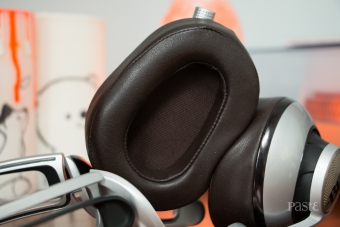 Because of that amp, there is also a 1000mAh battery, which is estimated get you 12 hours of listening. The headphones are also supposed to power on and off automatically whenever you open or close their large frame. On both of these counts, my experience was less than satisfactory. The estimated battery life proved to be on the high side for me, and the power off feature never seemed to work as well as I hoped. That power off feature also pauses whatever you’re listening to when you take the headphones off. This aspect was brilliant, working nearly every time and almost instantly. But I never saw a boost to battery life, which is was what I was really looking for as I was terrible about remembering to switch the amplifier off, meaning that I’d often find them DOA the next day. As mentioned above, this doesn’t mean you can’t still use them, but you don’t get to experience them at full strength. So, to get the most out of them, either get in the habit of switching off the amp or charging them regularly.
Because of that amp, there is also a 1000mAh battery, which is estimated get you 12 hours of listening. The headphones are also supposed to power on and off automatically whenever you open or close their large frame. On both of these counts, my experience was less than satisfactory. The estimated battery life proved to be on the high side for me, and the power off feature never seemed to work as well as I hoped. That power off feature also pauses whatever you’re listening to when you take the headphones off. This aspect was brilliant, working nearly every time and almost instantly. But I never saw a boost to battery life, which is was what I was really looking for as I was terrible about remembering to switch the amplifier off, meaning that I’d often find them DOA the next day. As mentioned above, this doesn’t mean you can’t still use them, but you don’t get to experience them at full strength. So, to get the most out of them, either get in the habit of switching off the amp or charging them regularly.
That small annoyance is worth it, though. When you do have everything working at the height of their powers, what the Ellas are able to deliver is special, to a point worthy of hyperbole, though any plaudit you could place on these isn’t hyperbole, only plain fact.
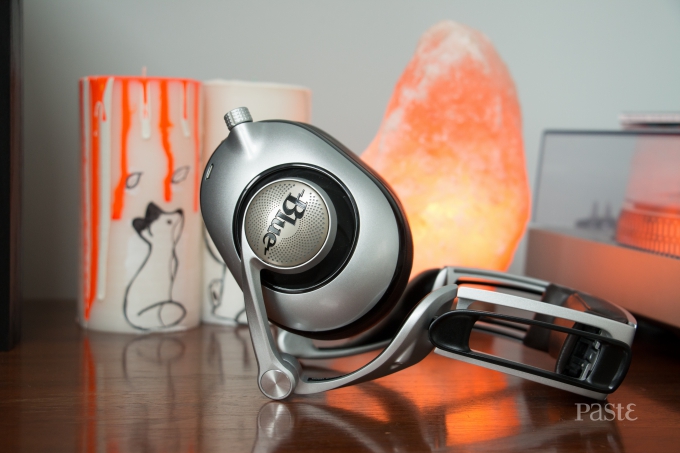 I won’t deny that $700 is a lot of money. The world of high-end audio equipment is full of products capable of marring your neck after repeated whiplash caused by double checking prices, but even still the Ellas are in a tier that makes them out of reach for most consumers, myself included. I am not going to tell you to forget the other great headphones you could buy, even a few with planar magnetic drivers, for a fraction of the price and pick these up instead. If you were to, you would not be disappointed in your investment, but you might wonder about all the things you could have bought with the hundreds of dollars you would’ve saved with a different choice.
I won’t deny that $700 is a lot of money. The world of high-end audio equipment is full of products capable of marring your neck after repeated whiplash caused by double checking prices, but even still the Ellas are in a tier that makes them out of reach for most consumers, myself included. I am not going to tell you to forget the other great headphones you could buy, even a few with planar magnetic drivers, for a fraction of the price and pick these up instead. If you were to, you would not be disappointed in your investment, but you might wonder about all the things you could have bought with the hundreds of dollars you would’ve saved with a different choice.
If you’re the right buyer, an audiophile looking to up their equipment but not ready to lay down the astronomical amount of money some of that equipment calls for, the Blue Ella headphones are a phenomenal choice. Their combination of hardware and sound is unmatched by any pair I’ve had the pleasure of testing in the past year, which I’ll admit is a small sample size, but don’t let that discredit the excellence here. The Ellas are, without a doubt, an exceptional pair of headphones.